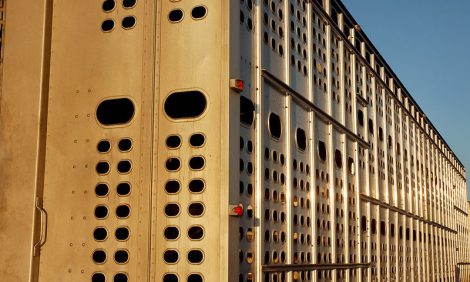



Don't Rush Them To Pasture: Evaluate Risk For Delayed Rebreeding
Turning cow/calf pairs on to spring pasture generally brings a boost to their nutrient intake which is beneficial going into the breeding season, writes livestock expert Sandy Johnson.If pasture conditions are less than optimal, producers should consider potential impacts on cow reproduction and weigh options that could be taken to mitigate delayed rebreeding problems. Estimate that return at weaning is reduced $84 for each 21 day cycle a calf is born later (21 days x 2 lbs/d x $2/lb).
There are two primary concerns related to pasture condition and calves being born later in the season, writes the University of Kansas specialist.

First is extended postpartum anestrus and second is increased early embryonic loss. More than one cause could impact the same group of animals. Inadequate nutrition after calving will delay the return to normal estrous cycles especially in cows that were thin at calving.
Cows that haven’t started cycling when first turned out on pasture will likely be further delayed if there is not sufficient forage quantity or quality for cows to maintain a positive energy balance.
This could be further compounded if grass is short and cows are approaching peak lactation (8 to 9 weeks post calving) and/or had been experiencing significant condition loss after calving.
If the breeding started before going to grass or concurrently, early embryonic loss could be a concern.
Embryo survival was reduced 27 per cent when heifers went from a grazing allowance of twice their energy requirements 10 days before breeding to a lower grazing allowance of 80 per cent of energy requirements for 14 days post insemination.
It is early during pregnancy when embryos are most susceptible to stressors from nutritional changes or the environment (i.e. hot weather or transportation stress). Recently a producer who starts breeding before grass turnout commented to me about a gap in calving that corresponded to the first weeks of grazing. Similar reports come from producers who have bred heifers in a dry lot and then turned out on pasture.
Management options to deal with this potential problem:
- Delay turnout and allow more forage growth to occur before grazing begins. This may be a wise grazing management step independent of decisions related to cow reproduction.
- Provide supplementation on pasture. In most cases this should be an energy supplement rather than a protein supplement. Presence of some highly palatable forage may make it challenging to achieve desired intake of supplement.
- Consider any negative consequences of the supplemental feeding on the pasture its self.
- Delay start of breeding season. Most viable if a week to 10 days delay will provide sufficient improvement in nutrient intake.
None of these options may seem particularly attractive however the potential risks and the associated cost should be evaluated.
We do not have research data to tell us at exactly what point these problems occur but they do occur and in a strong calf market the implications are magnified.
Records of cow body condition score at calving and prior to turnout, calving distribution and normal forage growth would help producers make better decisions regarding potential problems with delayed rebreeding.


